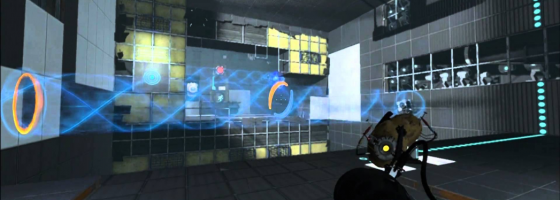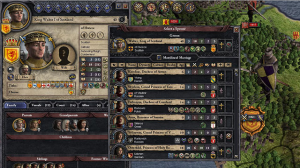Starting off on the right foot when it comes to showing your game off is crucial. I’ve talked before about how you usually have about 15 minutes to convince someone to keep playing your game. For this post, I want to focus on the three kinds of possible video game intros and the implications of each.
1: The First Level
For many action-based titles, the first level is both the tutorial and the story introduction for your game. A general practice is that the first level should be the last thing you finish as a game designer. The reason is the first level will determine whether someone continues to play or bounces off your game.
Because the first level serves as the tutorial and narrative introduction, it’s important to start off on a good foot. We’ve talked about the concept of “organic tutorials” before; the idea that the level teaches the player without stopping for actual guidance. Games like Half Life 2, Dark Souls, and Mario each teach the player through the level design.
For the former two, this is also where the rules and setting of the world are introduced. By the end of the first level, the player should know what’s going on and have an understanding of the base mechanics.
There is a good chance that your first level will be redesigned at least once or twice depending on the scope of your development.
2: Story
A story introduction simply means that the first thing we’re shown in your game is narrative-based. RPGs in particular like to start with cut-scenes that frame the story before the actual game begins. For this category, the player is going to spend the first 15 minutes or more watching the game; with the most interaction is hitting the “continue” button.
This is where the importance of cinematography and writing come into play. You better be able to keep someone entertained if there are 15 minute cutscenes. While you are less likely to lose someone from not understanding your game, it can be frustrating to not be able to play the game.
If you’re going to start with an introduction like this, have the ability to fast forward or even skip dialogue. Recently, Regalia of Men and Monarchs not only let you skip dialogue, but would have a text summary for those who did.
3: Tutorial
Our last section represent games where the story takes the backseat towards learning the game. Tutorial openings are typically seen in puzzle and strategy titles, where the mechanics are more esoteric. Designing a good tutorial is beyond the scope for this post, but this is a “do or die” moment for many games.
There is a critical problem if after a tutorial the player still doesn’t know how your game works. A major fallacy I’ve seen in the Indie space is using outside videos as a substitute for an in-game tutorial. I’ve said it before and I’m going to say it again: No one should have to leave your game in order to understand how to play it.
The tutorial should absolutely be the last thing you finish in your game. Getting it right can mean the difference of hooking players for hours, or having them quit in minutes due to frustration.
Respecting the Player:
With all the games being released daily, it’s important to value someone’s time. For me, if your game begins to bother me in the first 30 minutes of play, I’m not going to stick around to see if things improve.
A strong opening is just as important as a good ending. For you reading this, can you think of exemplary examples of any of the three categories not already mentioned?



